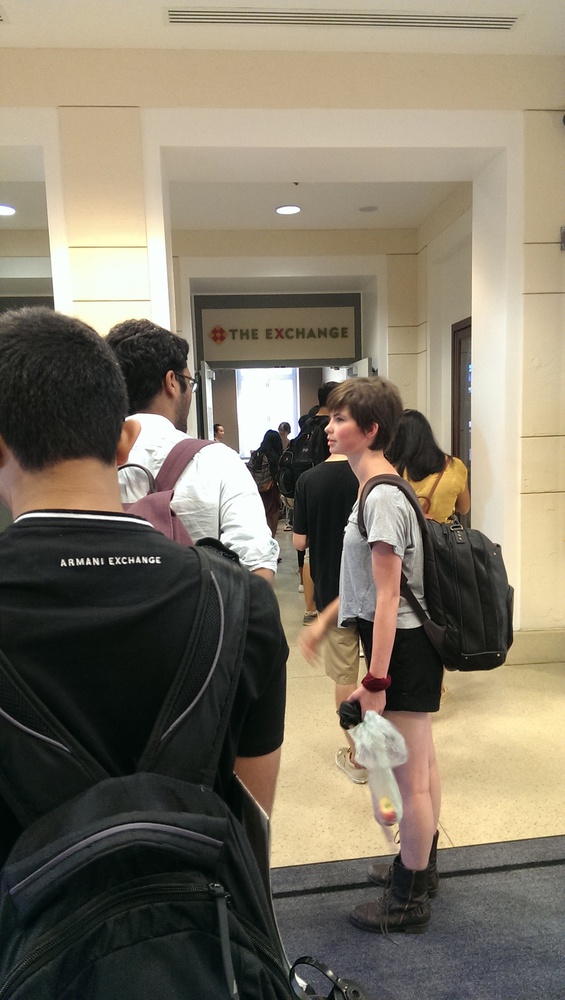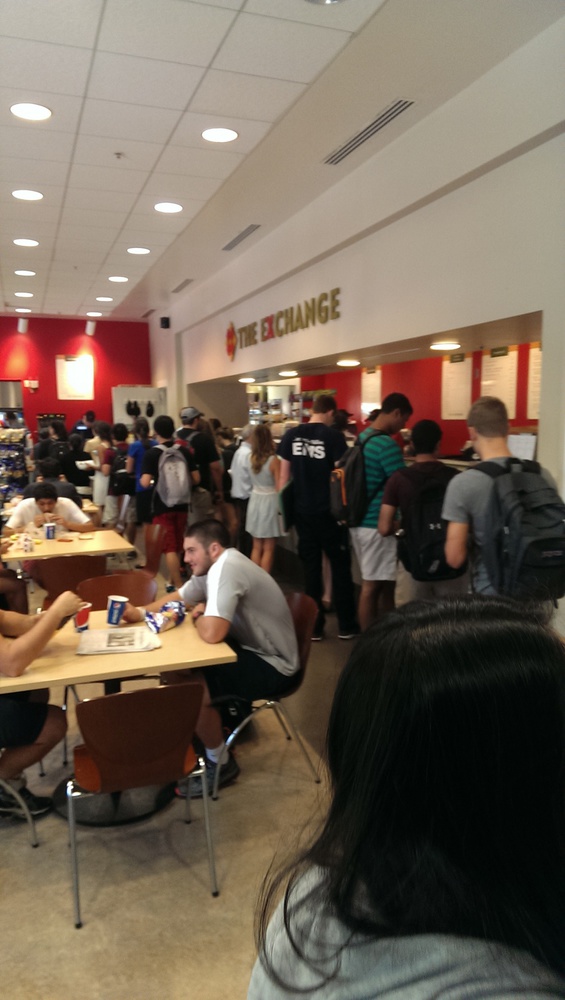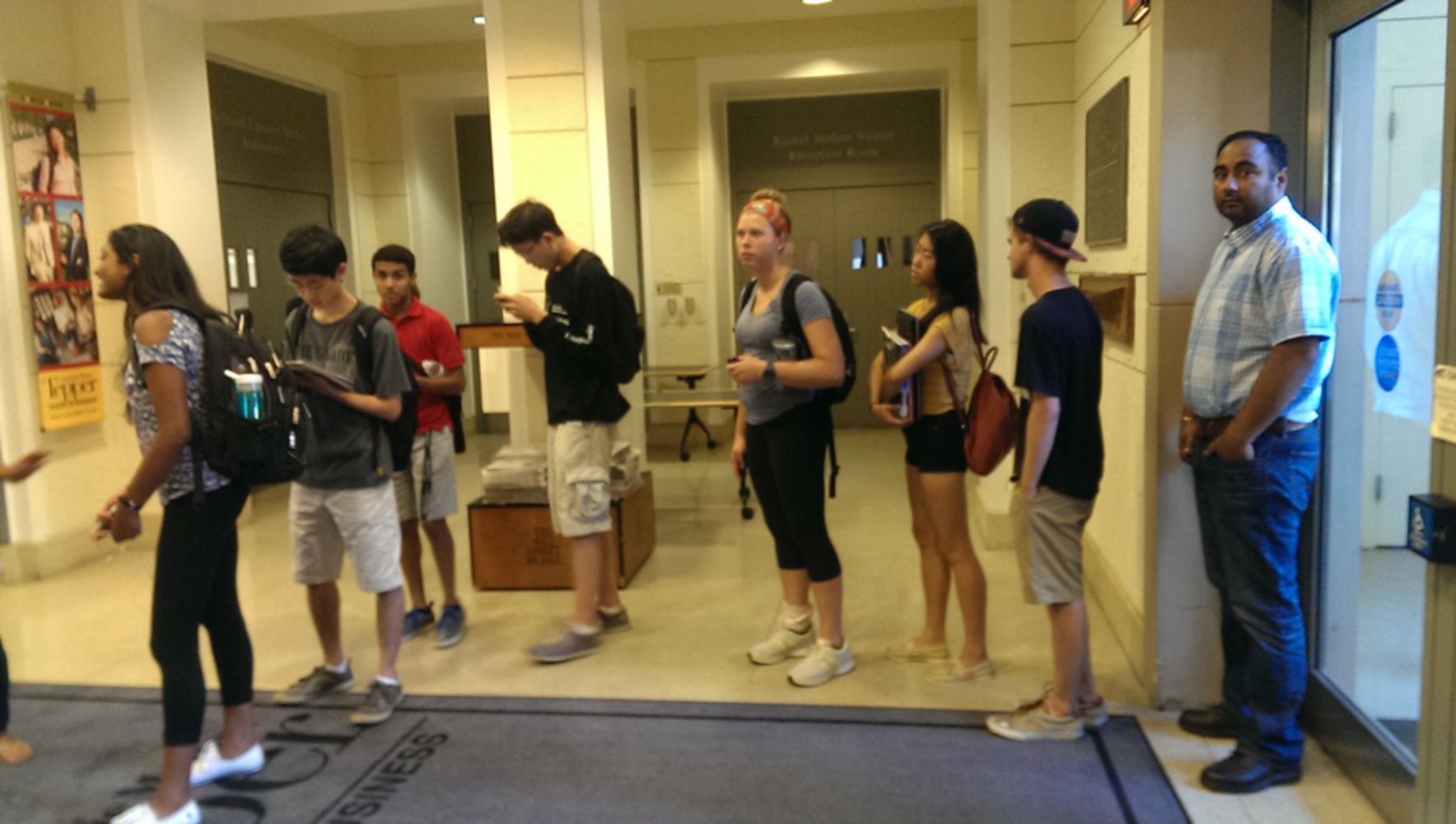What we want to change:
It only takes one meal at the exchange during peak lunch time hours to notice the logistical flaws in the layout of the restaurant. The problem lies in that there is only one line to order food, while there are three different food stations that each have a different employee working at the station at all times. While the sandwich making station could be busy, the hot food station could be completely open, but customers who want hot food have to wait in line all the same because they cannot tell if the people in front of them are there for hot food. This creates a lot of inefficiency, and the line builds up until the last customers have to stand completely outside of the eating area.
With the implementation of our solution, we hope to eliminate the inefficiency in The Exchange and make the waiting experience more pleasant for both the customers and the workers.
Observations:
- The menu fills the space on the wall behind the employees, it stretches far into the back of the eatery. This makes it so that people further in the back of the line cannot see the menu, and thus they don't always have their order ready when the workers are ready to take them (for first time eaters especially).
- People do not communicate with each other to find out who is ordering what; people will only skip ahead when the employee calls that the station is empty and no other students make a move towards the open spot.
- Around the "bend" in the queue, customers become unaware of anything that is happening within the restaurant. In a small experiment, we just stood as a group at the bend, and other customers started lining up behind us and waiting for us to move forward, even though we weren't in line for food. This reflects how embodied learning affects everybody; without environmental stimulus to say otherwise (e.g. seeing that no one is actually ordering food), we automatically assume that if there is a line, the people in the line must be there for the same reason as us and we must wait patiently behind them.
Our Solution:
Our solution to the problem involves a system that gets rid of the traditional, physical queue that is currently in place and replace it with a virtual queue system. This would first involve changing the three TV screens outside of The Exchange to first show the menu instead of the current news about business around the country. Through our observations, we saw that not that many people actually took time to stop by the TV's and watch the news, and a menu outside of the restaurant would allow for people to decide on what they want to get before getting to the front of the line.
Then, next to the TV's, there would be three ticket dispensers, each distributing a different color of numbered tickets for each of the different types of food you can get at the exchange. Tickets could be numbered 1 - 100 for each category, because at any one time it is almost certain that there won't be more than 100 people waiting for food. In order to get a ticket, all one has to do is swipe their CMU ID card at the designated wall-mounted kiosk and it will dispense a ticket. Then above the entrance to the restaurant and also above the worker stations (in case people are waiting inside too), there will be color coded displays of the current number being served at each of the different stations. Thus, customers can decide what they want before entering the crowded restaurant, and then wait for their number to be called. Once the number being served nears theirs, customers can go inside and get ready to give their order.
This would make it so that customers are free to relax while waiting, and also there will be less confusion stemming from the embodied action of waiting in a line.


